The Heavy-Ion Beam Diagnostic of the ISTTOK Tokamak—Highlights and Recent Developments
Abstract
:1. Introduction
2. The Heavy-Ion Beam Probe Operation Principle (Classic Configuration)
2.1. Plasma Potential Measurements
2.2. Plasma Density Fluctuation Measurements
2.3. Plasma Poloidal Field Fluctuation Measurements
3. The Heavy-Ion Beam Diagnostic Operation Principle
3.1. The Determination of Local Values of the ‘n sigma’ Profile
3.1.1. Experimental Measurements of Pressure-like Profiles
3.1.2. Control of Plasma Column Position
3.1.3. Pressure-like Profiles Measured during ISTTOK AC Operation
3.2. Determination of Plasma Density and Temperature Profiles
3.3. Poloidal Magnetic Field Retrieval and Measurements
3.3.1. Retrieving of Local Values of Magnetic Poloidal Field
3.3.2. Experimental Determination of the Evolution of the Plasma Current Magnetic Field Profile
3.4. Plasma Potential Measurements
3.5. Simultaneous Measurements of Pressure-like, Bp and Vp Fluctuations
4. Conclusions and Future Work
Author Contributions
Funding
Institutional Review Board Statement
Informed Consent Statement
Data Availability Statement
Conflicts of Interest
References
- Jobes, F.C.; Hickock, R.L. A direct measurement of plasma space potential. Nucl. Fusion 1970, 10, 195. [Google Scholar] [CrossRef]
- Crowley, T.P. Rensselaer heavy ion beam probe diagnostic methods and techniques. IEEE Trans. Plasma Sci. 1994, 22, 291–309. [Google Scholar] [CrossRef]
- Dnestrovskij, Y.N.; Melnikov, A.; Krupnik, L.; Nedzelskij, I. Development of heavy ion beam probe diagnostics. IEEE Trans. Plasma Sci. 1994, 22, 310–331. [Google Scholar] [CrossRef]
- Sharma, R.; Khabanov, P.O.; Melnikov, A.V.; Hidalgo, C.; Cappa, A.; Chmyga, A.; Eliseev, L.G.; Estrada, T.; Kharchev, N.K.; Kozachek, A.S.; et al. Measurements of 2D poloidal plasma profiles and fluctuations in ECRH plasmas using the Heavy Ion Beam Probe system in the TJ-II stellarator. Phys. Plasmas 2020, 27, 062502. [Google Scholar] [CrossRef]
- Solensten, L.; Connor, K.A. Heavy ion beam probe energy analyzer for measurements of plasma potential fluctuations. Rev. Sci. Instrum. 1987, 58, 516–519. [Google Scholar] [CrossRef]
- Melnikov, A.V.; Drabinskiy, M.; Eliseev, L.; Khabanov, P.; Kharchev, N.; Krupnik, L.; De Pablos, J.; Kozachek, A.; Lysenko, S.; Molinero, A.; et al. Heavy ion beam probe design and operation on the T-10 tokamak. Fusion Eng. Des. 2019, 146, 850–853. [Google Scholar] [CrossRef]
- Melnikov, A.V.; Eliseev, L.; Ascasibar, E.; Chmyga, A.; Hidalgo, C.; Ido, T.; Jiménez-Gomez, R.; Komarov, A.; Kozachek, A.; Krupnik, L.; et al. Alfvén eigenmode properties and dynamics in the TJ-II stellarator. Nucl. Fusion 2012, 52, 123004. [Google Scholar] [CrossRef]
- Malaquias, A.; Henriques, R.; Nedzelsky, I. Inversion methods for the measurements of MHD-like density fluctuations by Heavy Ion Beam Diagnostic. J. Instrum. 2015, 10, P09024. [Google Scholar] [CrossRef]
- Henriques, R.B.; Malaquias, A.; Nedzelskiy, I.S.; Silva, C.; Coelho, R.; Figueiredo, H.; Fernandes, H. Radial profile measurements of plasma pressure-like fluctuations with the heavy ion beam diagnostic on the tokamak ISTTOK. Rev. Sci. Instrum. 2014, 85, 11D848. [Google Scholar] [CrossRef] [PubMed]
- Henriques, R.B.; Carvalho, B.B.; Duarte, A.S.; Carvalho, I.S.; Batista, A.J.N.; Coelho, R.; Silva, C.; Malaquias, A.; Figueiredo, H.; Alves, H.; et al. Real-time vertical plasma position control using the Heavy Ion Beam Diagnostic. IEEE Trans. Nucl. Sci. 2017, 64, 1431–1438. [Google Scholar] [CrossRef]
- Fernandes, H.; Varandas, C.; Cabral, J.; Figueiredo, H.; Galvão, R. Engineering aspects of the ISTTOK operation in a multicycle alternating flat-top plasma current regime. Fusion Eng. Des. 1998, 43, 101–113. [Google Scholar] [CrossRef]
- Malaquias, A.; Henriques, R.; Silva, C.; Figueiredo, H.; Nedzelskiy, I.; Fernandes, H.; Sharma, R.; Plyusnin, V.V. Investigation of the transition of multicycle AC operation in ISTTOK under edge electrode biasing. Nucl. Fusion 2017, 57, 116002. [Google Scholar] [CrossRef]
- Malaquias, A.; Nedzelskii, I.S.; Varandas, C.A.F.; Cabral, J.A.C. Evolution of the tokamak ISTTOK plasma density and electron temperature radial profiles determined by heavy ion beam probing. Rev. Sci. Instrum. 1999, 70, 947. [Google Scholar] [CrossRef]
- Cabral, J.A.C.; Malaquias, A.; Praxedes, A.; Van Toledo, W.; Varandas, C. The heavy ion beam diagnostic for the tokamak ISTTOK. IEEE Trans. Plasma Sci. 1994, 22, 350–358. [Google Scholar] [CrossRef]
- Malaquias, A.; Cabral, J.; Varandas, C.; Canario, A. Evolution of the poloidal magnetic field profile of the ISTTOK plasma followed by heavy ion beam probing. Fusion Eng. Des. 1997, 34–35, 671–674. [Google Scholar] [CrossRef]
- Malaquias, A. O Diagnóstico de Feixe de Iões Pesados do Tokamak ISTTOK Desenvolvimentos Tecnológicos e Algoritmos para Interpretação Dmedidas. Ph.D. Thesis, Instituto Superior Técnico, Lisbon, Portugal, January 2000. (In Portuguese). [Google Scholar]
- Fujisawa, A.; Iguchi, H.; Taniike, A.; Sasao, M.; Hamada, Y. A 6 MeV Heavy Ion Beam Probe for the Large Helical Device. IEEE Trans. Plasma Sci. 1994, 22, 395–402. [Google Scholar] [CrossRef] [Green Version]
- Nedzelskiy, I.S.; Malaquias, A.; Sharma, R.; Henriques, R. 90° cylindrical analyzer for the plasma potential fluctuations measurements by heavy ion beam diagnostic on the tokamak ISTTOK. Fusion Eng. Des. 2017, 123, 897–900. [Google Scholar] [CrossRef]
- Sharma, R.; Nedzelskiy, I.; Malaquias, A.; Henriques, R. Characterization of modified 90° cylindrical energy analyser with electron beam. J. Instrum. 2020, 15, C01018. [Google Scholar] [CrossRef]
- Sharma, R.; Nedzelskiy, I.; Malaquias, A.; Henriques, R. Plasma potential and fluctuations measurements by HIBD with 90° cylindrical energy analyzer on the ISTTOK tokamak. Fusion Eng. Des. 2020, 160, 112016. [Google Scholar] [CrossRef]


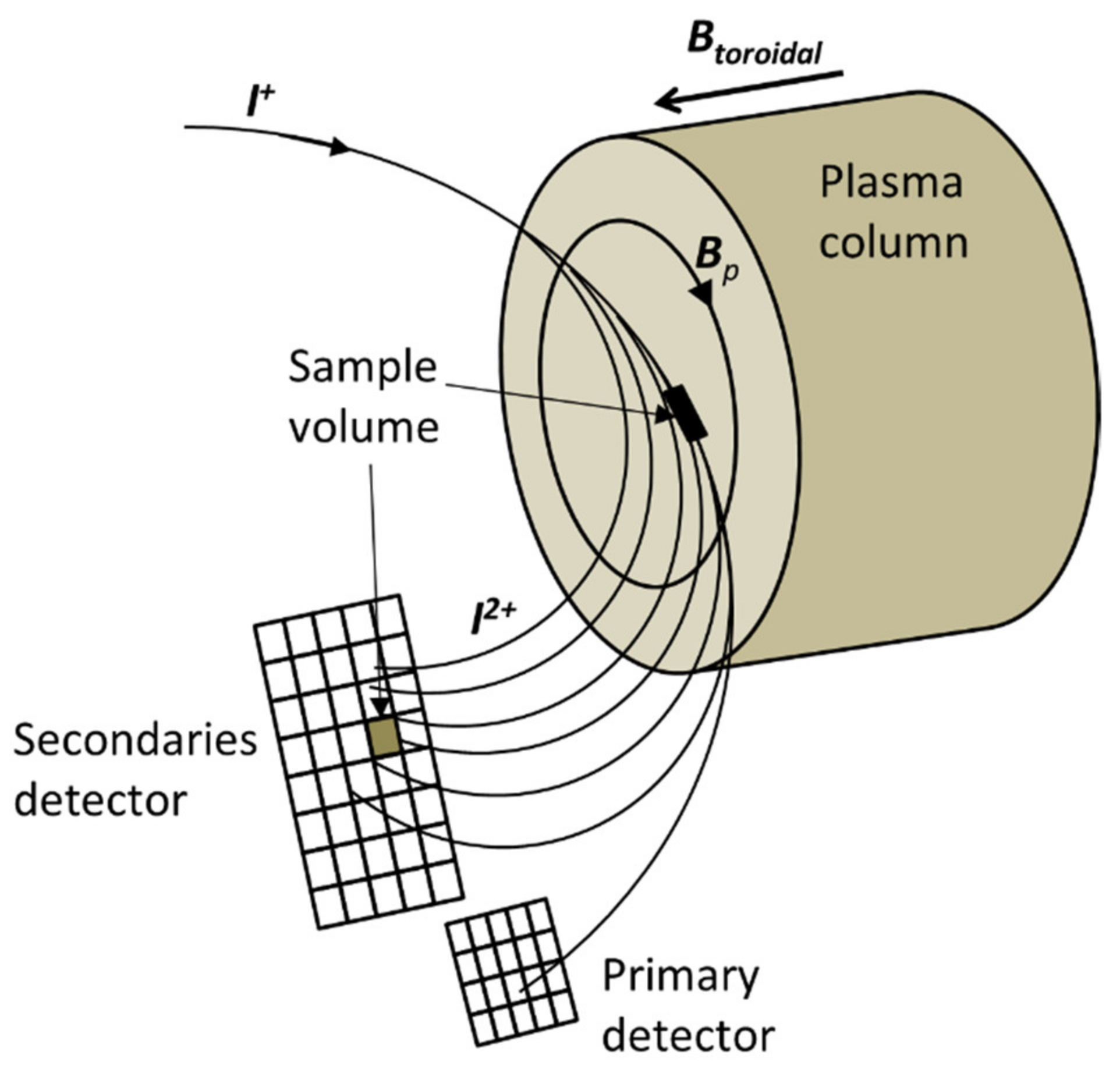


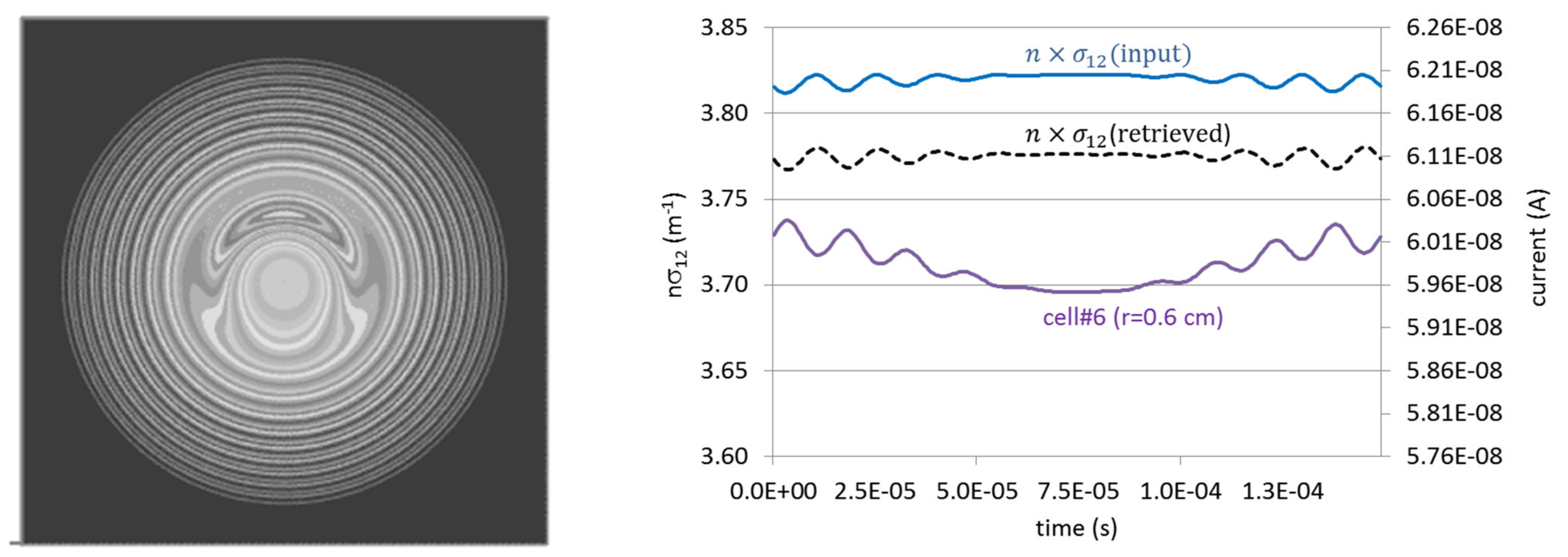



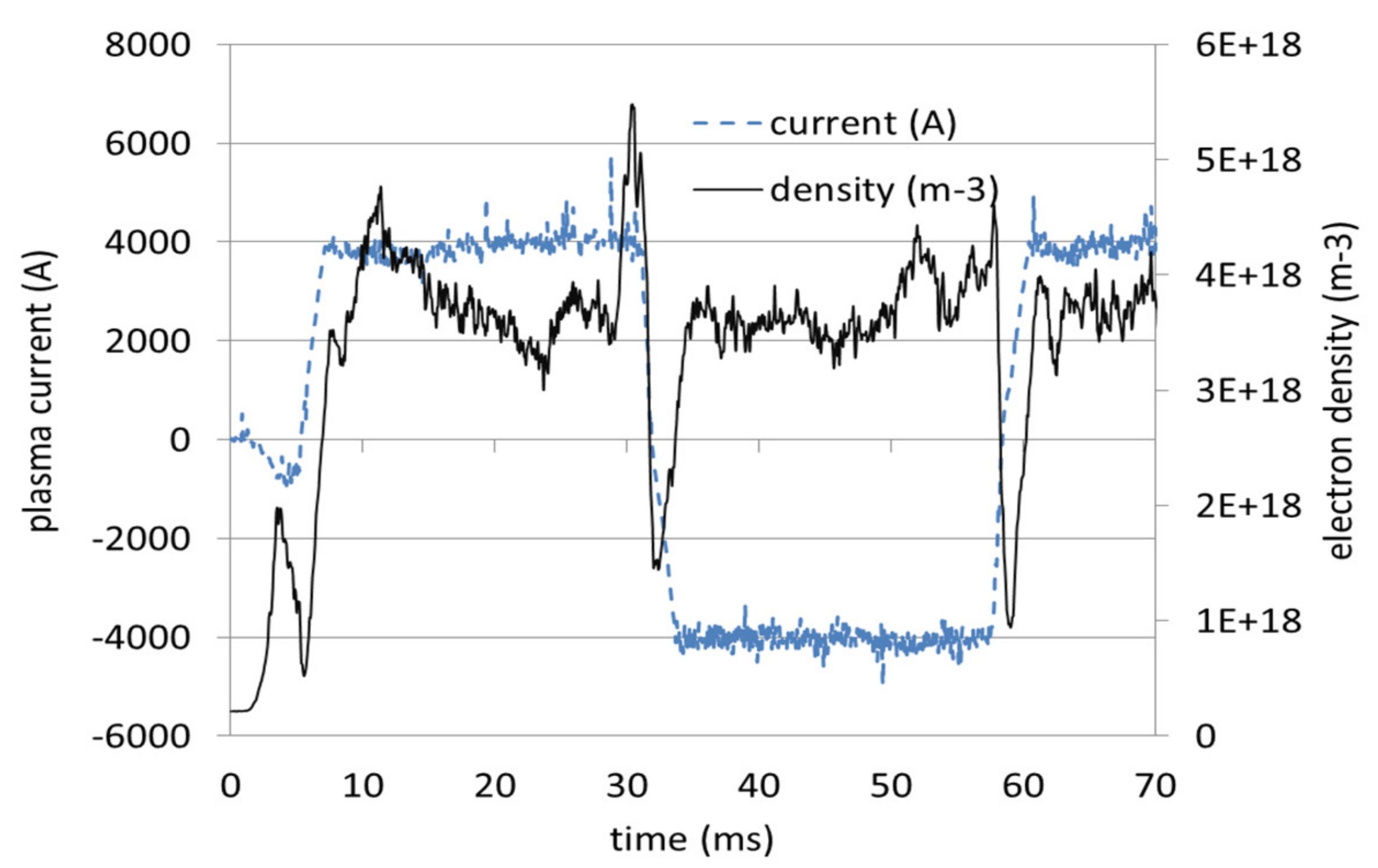

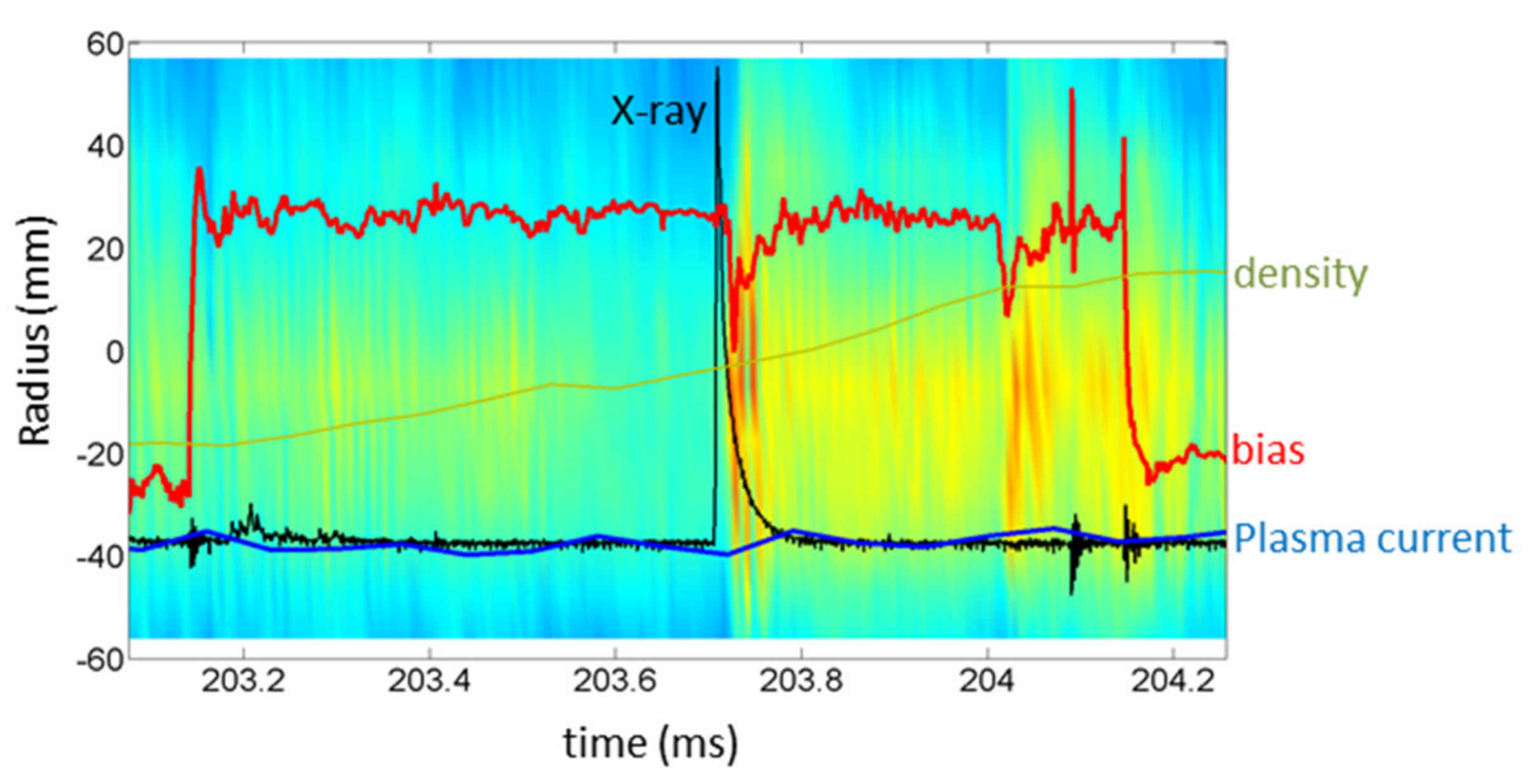

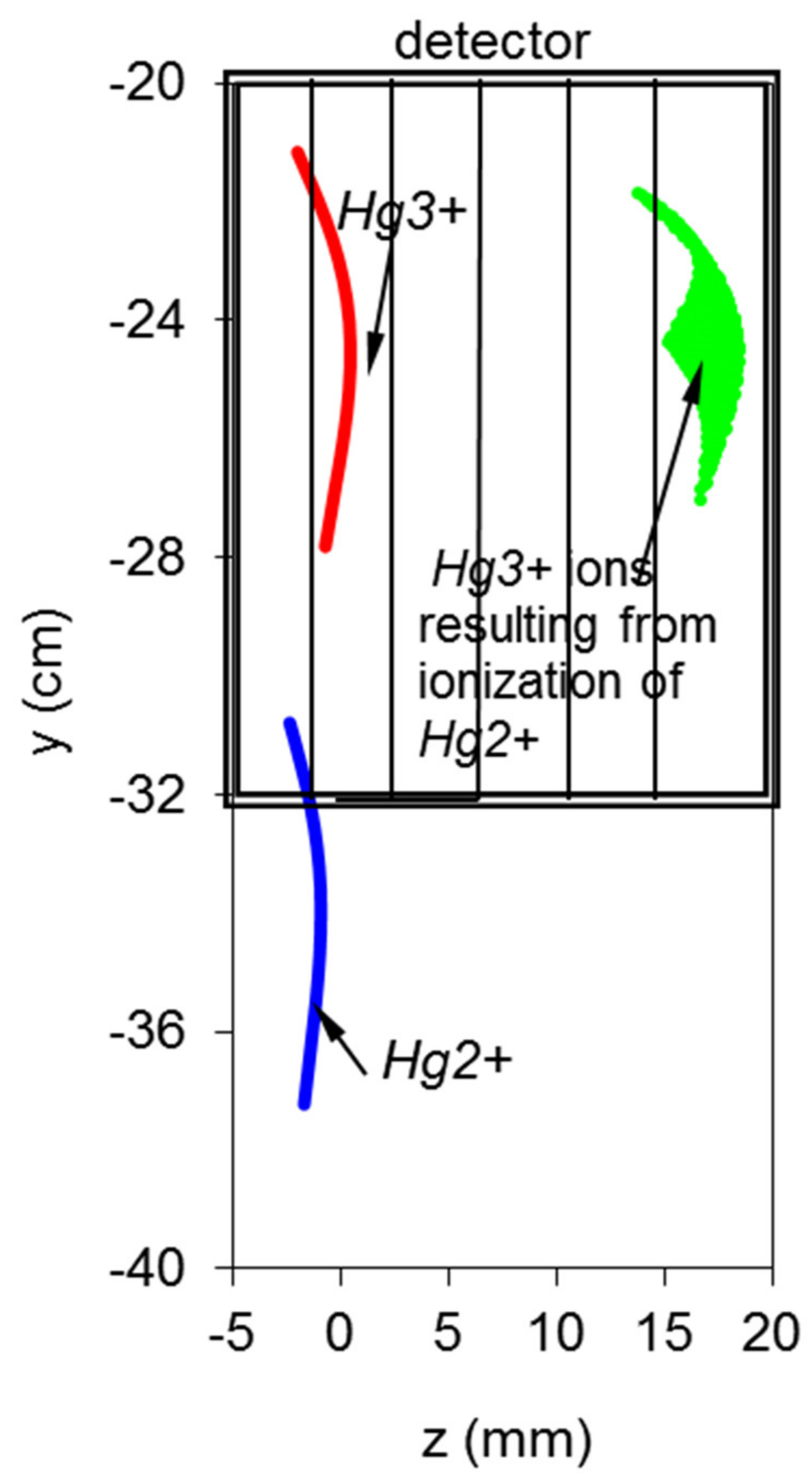
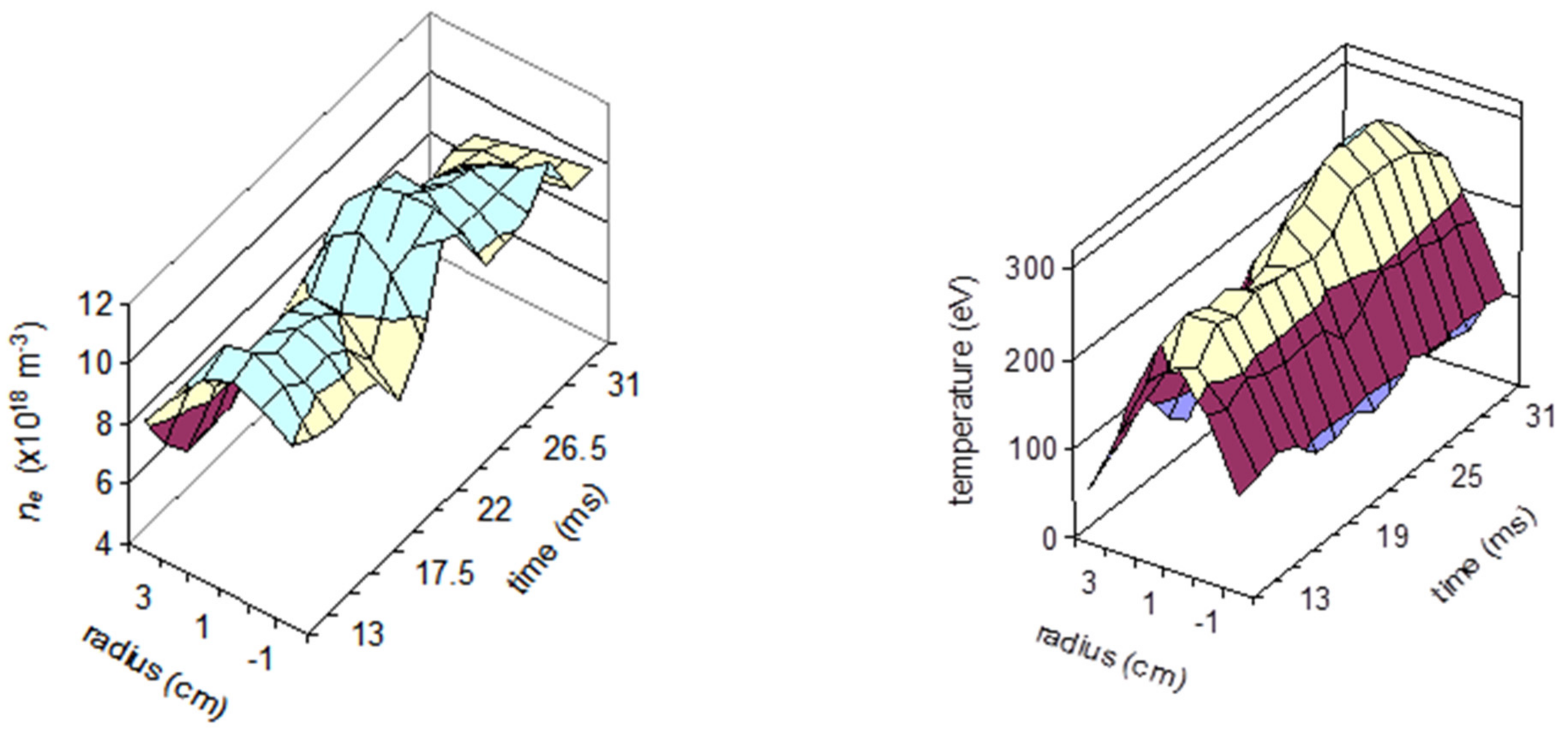




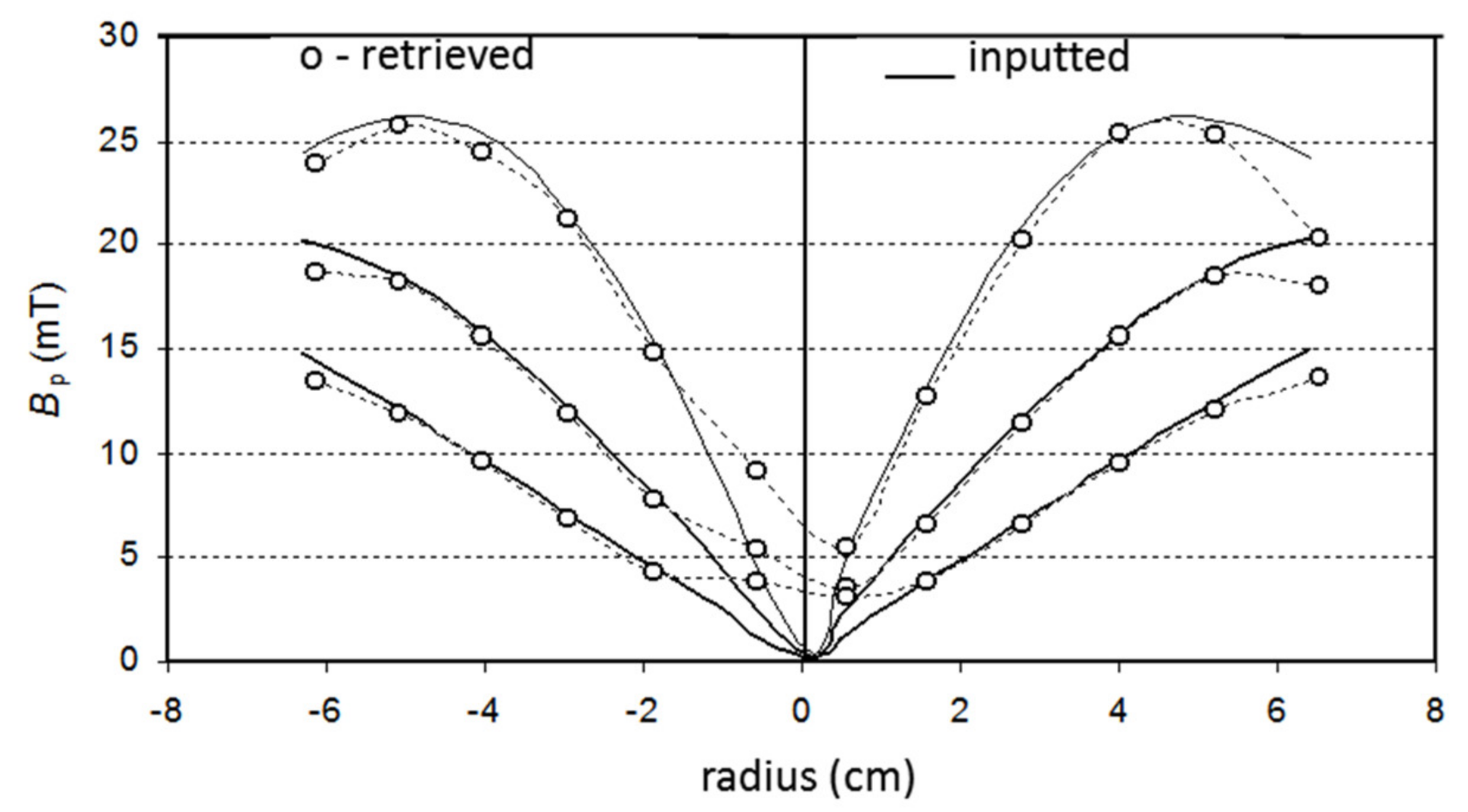

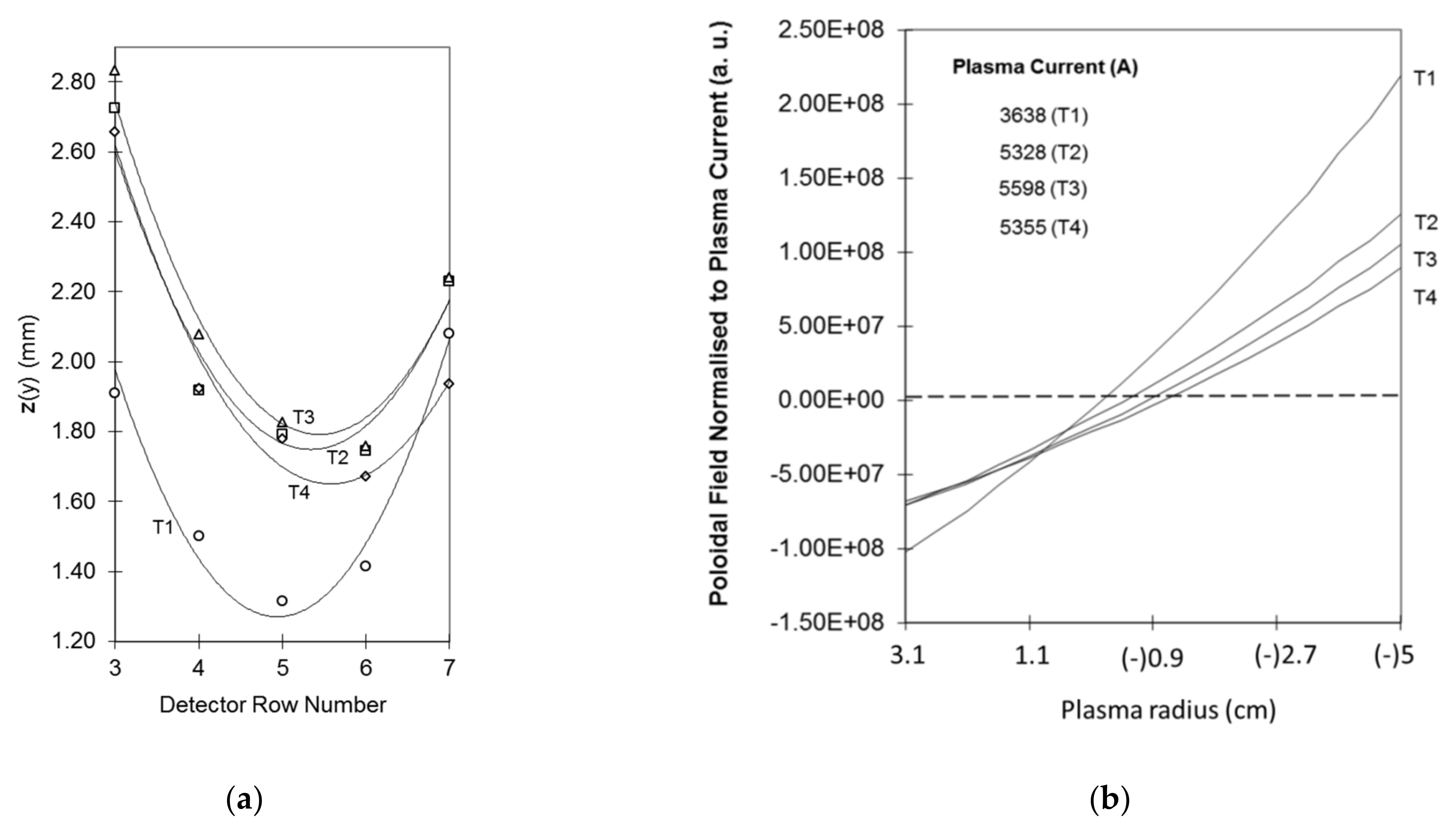





Publisher’s Note: MDPI stays neutral with regard to jurisdictional claims in published maps and institutional affiliations. |
© 2022 by the authors. Licensee MDPI, Basel, Switzerland. This article is an open access article distributed under the terms and conditions of the Creative Commons Attribution (CC BY) license (https://creativecommons.org/licenses/by/4.0/).
Share and Cite
Malaquias, A.; Nedzelskiy, I.S.; Henriques, R.; Sharma, R. The Heavy-Ion Beam Diagnostic of the ISTTOK Tokamak—Highlights and Recent Developments. Sensors 2022, 22, 4038. https://doi.org/10.3390/s22114038
Malaquias A, Nedzelskiy IS, Henriques R, Sharma R. The Heavy-Ion Beam Diagnostic of the ISTTOK Tokamak—Highlights and Recent Developments. Sensors. 2022; 22(11):4038. https://doi.org/10.3390/s22114038
Chicago/Turabian StyleMalaquias, A., I. S. Nedzelskiy, R. Henriques, and R. Sharma. 2022. "The Heavy-Ion Beam Diagnostic of the ISTTOK Tokamak—Highlights and Recent Developments" Sensors 22, no. 11: 4038. https://doi.org/10.3390/s22114038
APA StyleMalaquias, A., Nedzelskiy, I. S., Henriques, R., & Sharma, R. (2022). The Heavy-Ion Beam Diagnostic of the ISTTOK Tokamak—Highlights and Recent Developments. Sensors, 22(11), 4038. https://doi.org/10.3390/s22114038





